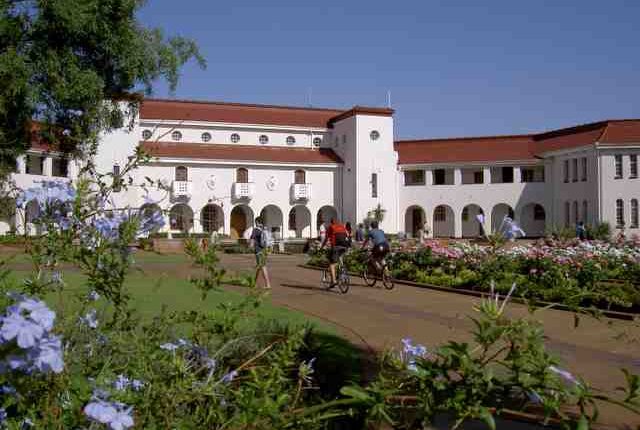North-West University: The expression of self at the NWU Gallery
The greatest gift of art is currently available at the North-West University (NWU). The NWU Gallery is hosting an art exhibition with two themes. The O Mang? O Tswa Kae? O Ya Kae exhibition, curated by Boitumelo Makousu, and Kasi: Leitlho La Sechaba (Eye of the people), curated by Mahlomola Maroba.
Both exhibitions run from 1 July until 1 August 2022.
The O Mang? O Tswa Kae? O ya Kae? exhibition is being hosted at the NWU Gallery on the Potchefstroom Campus, and it focuses on an individual returning to themself and understanding who they are, where they come from and where they intend going. It also emphasises the importance of introspection.
“It is important for an individual to heal, realign themself and create their own story and heritage,” says Boitumelo. Different individuals experience different journeys in life and the exhibition therefore encourages one to tap into one’s inner self.
The three artists who are featured in this exhibition are Ras Silas Motse, Khotso Mahloma and Lesego Moncho, who all have their own different personal stories and heritage. Their beautiful art allows you to tap into their personal journey with them in a geometrical sequence.
The Kasi: Leitlho la Sechaba exhibition is hosted at the NWU Botanical Gardens, also on the Potchefstroom Campus. It focuses on the everyday life of South African citizens who live in a township. According to Mahlomola, the best way to tell a township story is to allow people who experienced it at first hand to tell it.
“It is important to talk about the day-to-day life and challenges that people from townships and queer people in a township face.”
The exhibition not only focuses on the struggles in a township, but also allows one to find an understanding of and common ground with people who live in townships so that imbalanced socio-economic factors can be corrected.
The three artists who are featured in the exhibition are Andile Bhala, Sebastian Legoete and Ronney Saaed. The artists tell their first-hand experienced realities regarding townships and allow an individual to understand what living in a township really entails.
The two exhibitions enable different individuals in society to reflect on themselves and speak about the unspoken dialogues that South Africans face on a daily basis. They furthermore embrace diversity and its importance in the South African space by depicting sexuality, heritage and spirituality.

